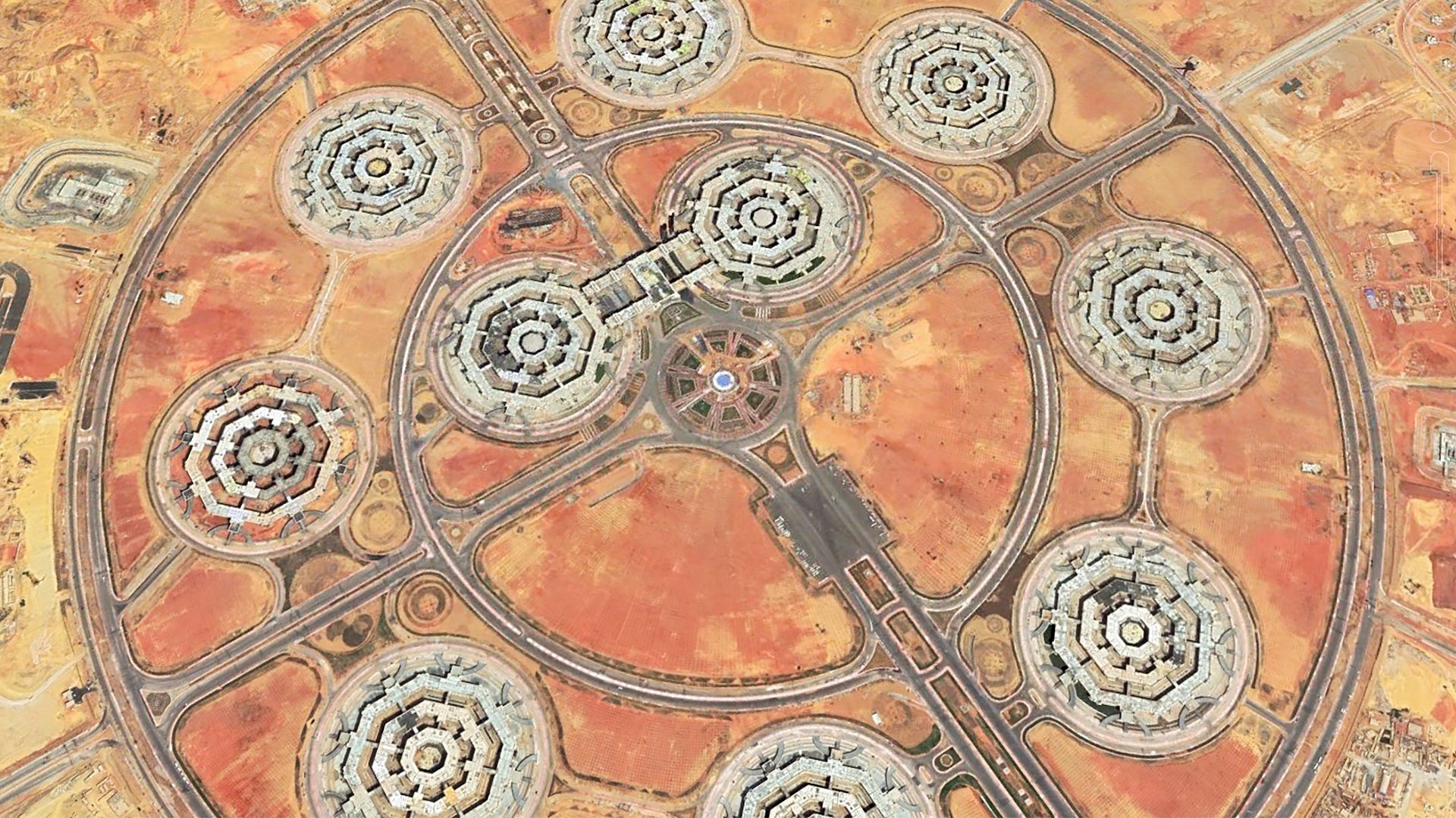When it comes to the seat of power for major militaries around the globe, gargantuan structures are par for the course. ThePentagon in Virginia may be the most famous, but Russia’s imposing Ministry of Defense headquarters is also highly impressive, and China’s Ministry of National Defense building in Beijing is also well known. When it comes to Egypt, even though it has one of the most powerful militaries in the region, some sort of iconic headquarters for the country’s Ministry of Defense doesn’t come to mind, but that is about to change—dramatically.
As part of a larger initiative to move government offices to a new administrative capital city roughly 20 miles to the east of sprawling, crowded, and in some cases crumbling, Cairo, the Egyptian MoD is pioneering the effort with an extremely large, elaborate, and highly unique installation.
Referred to as the “Octagon” because it is made up of the eight outer “nested” octagon-shaped buildings, with two more at its hub, and what looks like the ability to add another two within that hub in the future.

The hub and spoke design has been implemented with plenty of additional land for other installations and facilities to be added inside its second and third outer rungs, as well. The layout is also designed to organize and reflect the central command apparatus with the outer octagons housing each of the countries four service branches— the Egyptian Army, Egyptian Navy, Egyptian Air Force, and Egyptian Air Defense Forces. So, it’s something of a grand manifestation of the Egyptian Ministry of Defense’s organizational chart as much as it is an architectural statement. Regardless, from space, the project looks like an alien base out of a science fiction movie.

The elaborate compound started construction in 2016. Within a matter of months, the blank desert landscape was being transformed into a sprawling installation unlike any other on the planet. As you can see in the image below dated November 2016, each ottoman is similar in configuration and there appear to be tunnels that run between each one and the two inner two octagons.

There are some clear tactical benefits to the design. Spreading the MoD’s functionality across multiple interconnected facilities offers survivability from limited attacks. Giving each service two well-spaced octagons also offers some redundancy should one be struck, at least depending on the functions and systems each one holds. Like America’s Pentagon, having three distinct ‘nested’ structures within each octagon also provides resiliency if one part of the facility is attacked. Isolating the sides and layers of each octagon into individual structures that are interconnected means that the entire installation wouldn’t be destroyed as the result of one explosive attack.

Beyond those potential merits, the size of the new military district overall, and just how elaborate it is, is somewhat bewildering. We cannot find an estimate of how much it cost, but suffice it to say that is far from cheap.
I originally became aware of the project when Mahmoud Gamal posted about it on Twitter. As you can see below, the design definitely takes into account ancient Egyptian architecture:
Some other renderings of the project are floating around the internet. Eventually, the idea is that the entire new administrative capital will feature lush landscaping and a central city complete with multiple skyscrapers rising from the desert floor.
You can see in the image below the overall plan for the military district in Egypt’s new administrative capital. It includes an air base, housing, and tons of space for expansion.



The project began in 2015 as a major vision of the then-new President Abdel Fattah el-Sisi as a way to solve logistical issues due to Cairo’s crowding and to jumpstart a new image of Egypt that was divorced from the political turmoil that descended upon the country as part of the Arab Spring. Some posit that it is like a monument to el-Sisi himself and have drawn parallels to it and the notoriously expensive building projects of the pharaohs long ago.

Some of the tens of billions of dollars needed to jump-start the project have come from Arab gulf states, China, and other foreign investment, as well as land sales and other Egyptian government fundraising initiatives.


Apparently, the project’s future is in doubt due to lack of funds to complete its multiple phases, as well as due to major logistical issues with building an entirely new city in the Egyptian desert and finding the people to actually build it. This may not impact the Ministry of Defense district, but it could leave its surroundings in something of a zombie state if funding and other major challenges aren’t solved.
It will be interesting to see how this remarkable site evolves over time. We will keep scanning satellite imagery and will report back with new developments when they occur.
Contact the author: Tyler@thedrive.com
